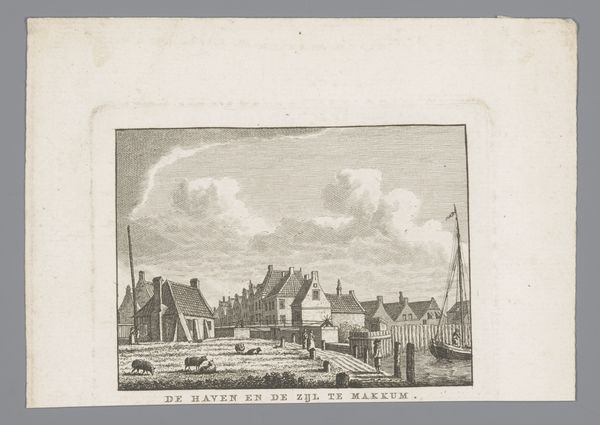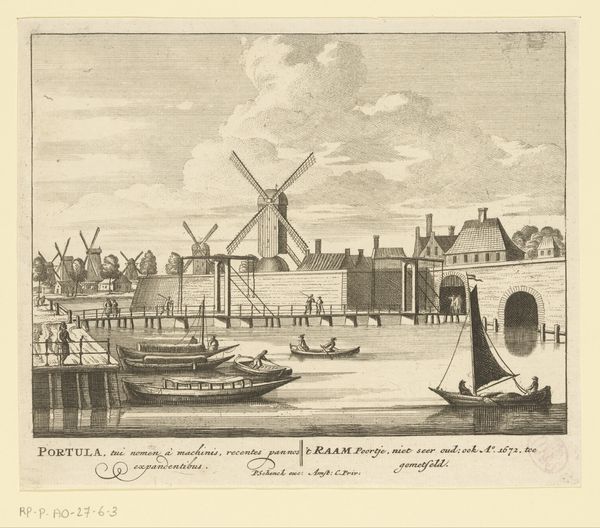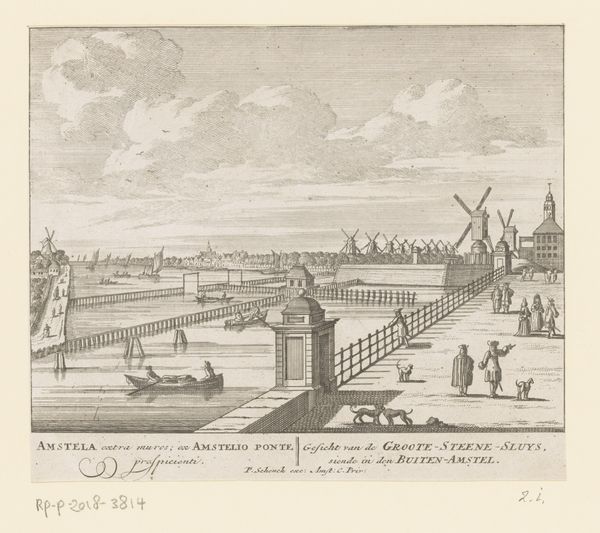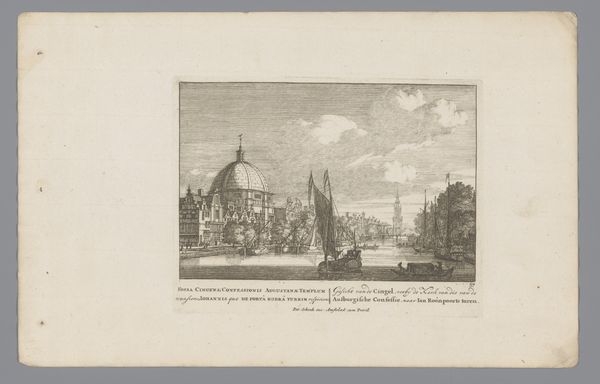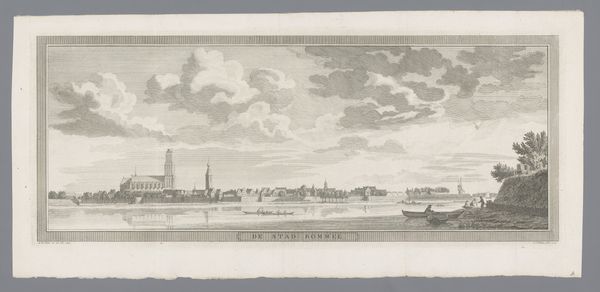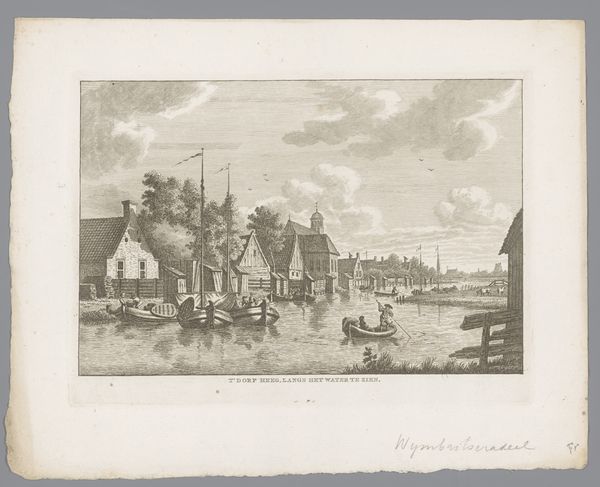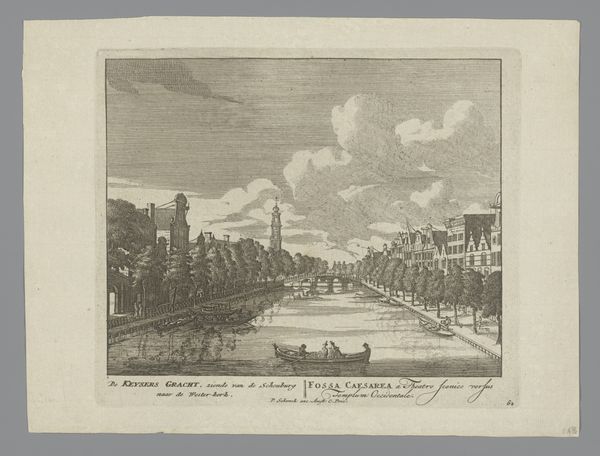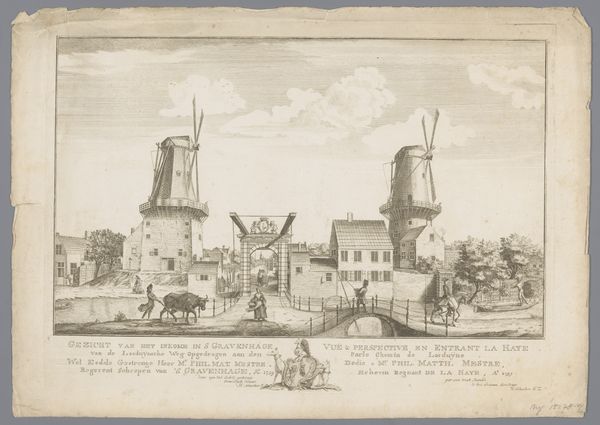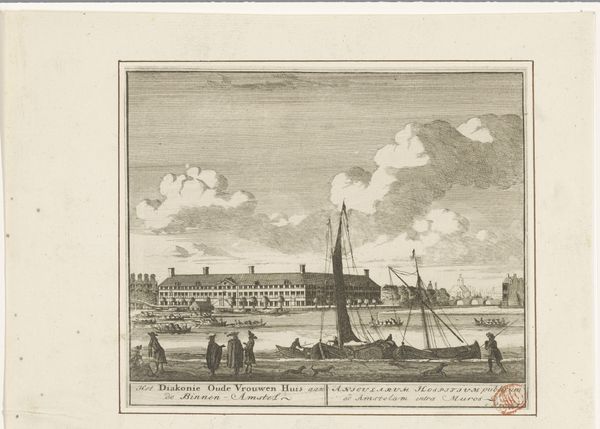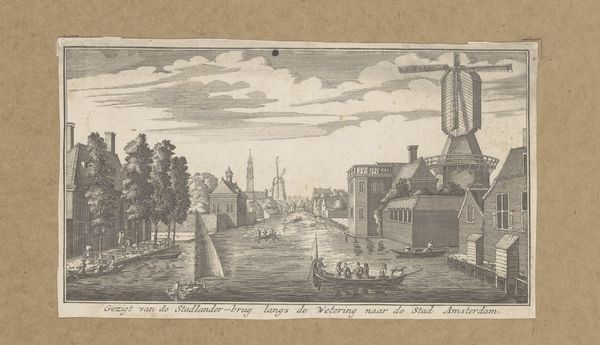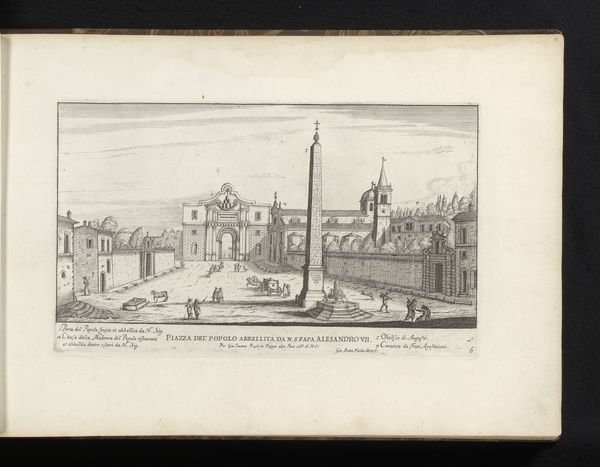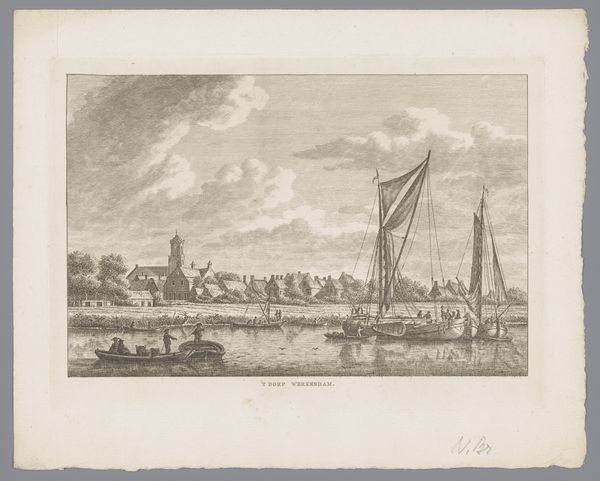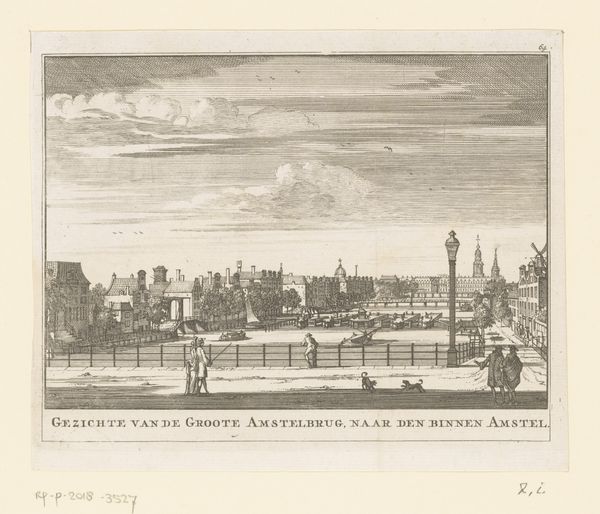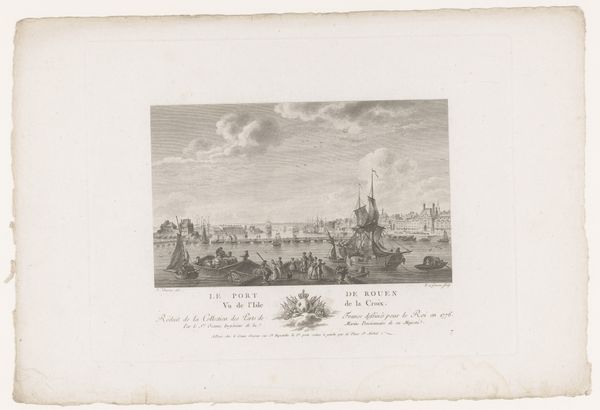
Gezicht van buiten de wallen op de Gerechtsplaats op het Paardenveld 1720 - 1750
0:00
0:00
print, etching, paper, engraving
#
baroque
# print
#
etching
#
landscape
#
paper
#
cityscape
#
engraving
Dimensions: height 84 mm, width 111 mm
Copyright: Rijks Museum: Open Domain
Curator: Standing before us is an etching dating from 1720-1750, attributed to an anonymous artist. It's titled "Gezicht van buiten de wallen op de Gerechtsplaats op het Paardenveld," or in English, "View from outside the walls on the Gerechtsplaats on the Paardenveld." Editor: It feels...distant. Observing a past moment, filtered through lines and shading, quite serene somehow. It is like an intricate little world contained on paper. What grabs you first? Curator: The prominent windmill, without a doubt. Note its sturdy construction, dominating the landscape, hinting at the milling process – a crucial aspect of early industrial economies and sustenance. Also, observe the contrast between the detailed windmill and the rendering of the buildings. What can we infer from the different styles? Editor: Possibly levels of importance, maybe it symbolizes the blend between industry and the quotidian, I wonder what type of paper this was printed on. The grain looks very fine. Considering its age, I would not be surprised if the labor costs were a significant aspect to the total cost of the work. Were prints like these intended for a specific audience? Curator: These prints often served multiple functions – decoration, documentation, even souvenirs. It allows a broad circulation of a specific perspective, something only the wealthy had access to before printmaking became more developed. They would be a method for the city’s growing middle class to own representations of their environment. Editor: I think you nailed it by talking about circulation. And circulation is key to its significance. Etchings like this become tools for understanding not just how things *looked* but how urban environments *functioned.* The relationship to production that emerges out of this kind of representation offers a look at our understanding of materiality and society at the time. Curator: I feel a longing to breathe the air of that Utrecht morning and sense the work and hum. Perhaps that's what makes this modest cityscape still captivating, despite the centuries and its humble size.
Comments
No comments
Be the first to comment and join the conversation on the ultimate creative platform.
